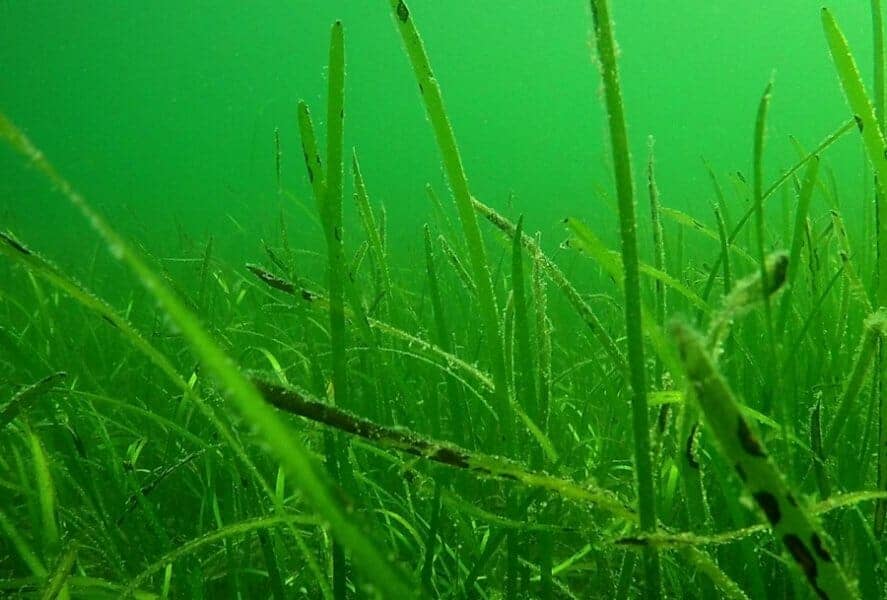When infected with eelgrass wasting disease, blades of eelgrass develop black and brown splotches (‘lesions’) that can spread and kill the blade. Credit: Olivia Graham/Cornell University
Every year, the world loses an estimated 7 percent of its seagrasses. While the reasons are manifold, one culprit has long confounded scientists: eelgrass wasting disease.
This September a team of biologists is zeroing in on the problem, in the first study of the disease to stretch along the Pacific Coast from southern California to Alaska, with a $1.3 million grant from the National Science Foundation.
“There are a number of seagrass monitoring programs that work on regional and to some degree on global scales, but most of them are really only looking at the cover and the abundance of the seagrass itself,” said Emmett Duffy, director of the Marine Global Earth Observatories (MarineGEO) headquartered at the Smithsonian Environmental Research Center.
The new grant builds on collaborative work by the Zostera Experimental Network (ZEN), led by Duffy, and will look at how climate, biodiversity and other environmental aspects can change the course of the disease. The team is deploying a wide arsenal of weapons to understand it: In addition to marine biologists, they are bringing on geographers, computer scientists, artificial intelligence and drones.
Seagrasses are among the most valuable ecosystems on Earth. They provide habitat for popular fish like salmon and herring, protect shorelines from erosion and filter out nutrient pollution. Just a single hectare (about 2.5 acres) is conservatively estimated to be worth over $19,000 a year. But seagrasses face constant threats from pollution, murky waters and disease.
Eelgrass — the most common seagrass along North America’s West Coast — faces yet another nemesis. A microscopic slime mold called Labyrinthula zosterae frequently infects it with eelgrass wasting disease. The disease wiped out 90 percent of eelgrasses along the North American East Coast and Europe in the 1930s, and is still threatening eelgrass recoveries worldwide. More recently, many Pacific Coast bays have noticed their eelgrass beds shrinking, including California’s Morro Bay, which lost more than 95 percent of its eelgrass between 2007 and 2015. In 2014, California developed its California Eelgrass Mitigation Policy to minimize damage to its remaining eelgrass, with a goal of no net loss in eelgrass habitat function.
Eelgrass wasting disease darkens the grass with black and brown spots that spread along its blades, destroying its cells and preventing photosynthesis, eventually killing the grass. “The lesions eat away and kill the tissue, and then the whole blade can fall off,” said Drew Harvell, a Cornell biologist who specializes in marine diseases. “It’s extremely infectious…even blades that aren’t touching other ones are able to pick up this infectious disease.”
However, the slime mold does not always trigger deadly outbreaks. Not all strains of the […]
Full article: Eelgrass wasting disease has new enemies: Drones and artificial intelligence — ScienceDaily
More about seagrass, water, and ecosystems:
Seagrass Die-off and How Freshwater from the Everglades gets into Florida Bay
Scientists warn of salt pollution of freshwaters — salinity
Sugar’s decades-long hold over Everglades came with a price
How climate change could threaten the water supply for millions of Californians



